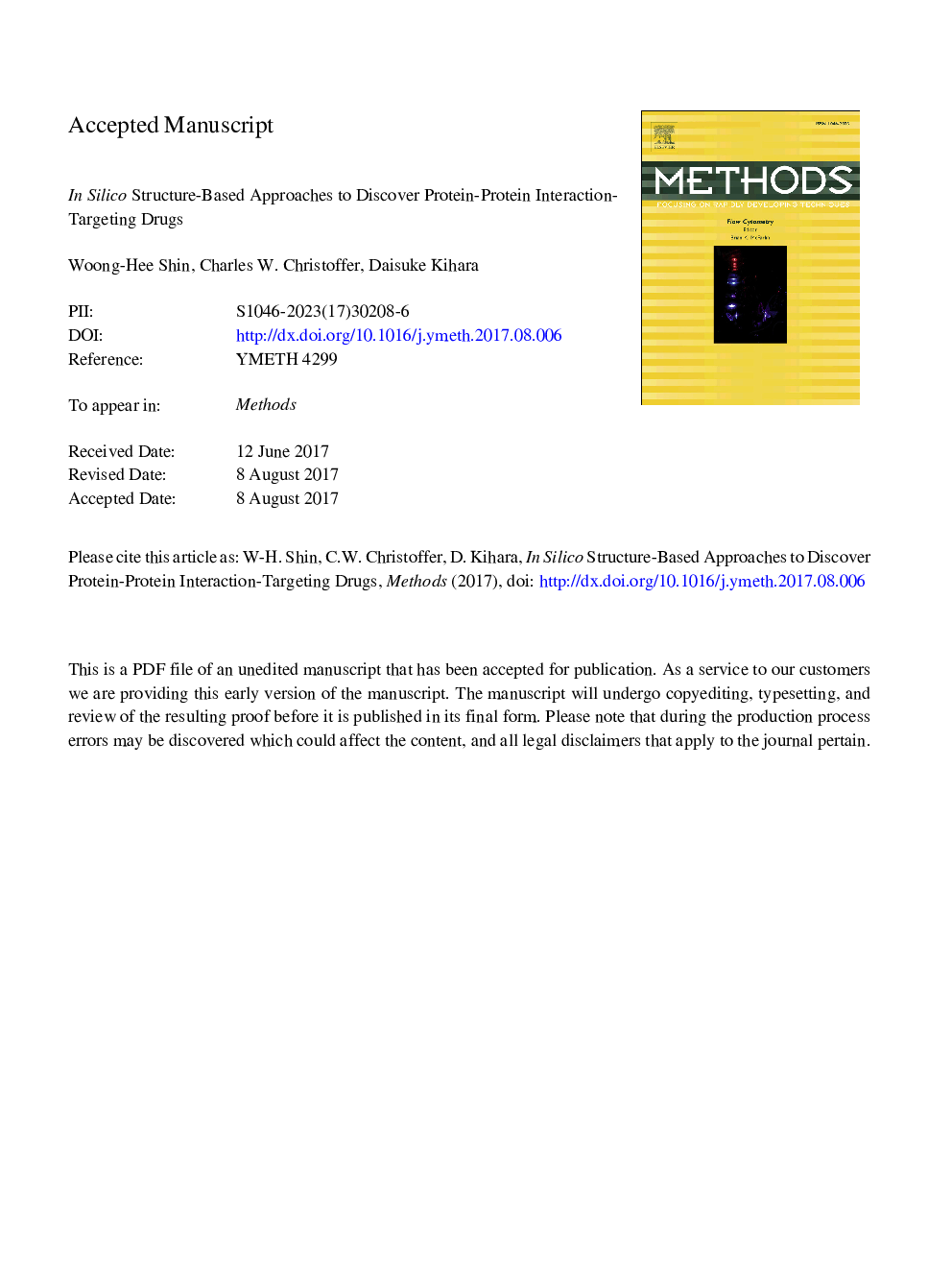| Article ID | Journal | Published Year | Pages | File Type |
|---|---|---|---|---|
| 8340162 | Methods | 2017 | 44 Pages |
Abstract
A core concept behind modern drug discovery is finding a small molecule that modulates a function of a target protein. This concept has been successfully applied since the mid-1970s. However, the efficiency of drug discovery is decreasing because the druggable target space in the human proteome is limited. Recently, protein-protein interaction (PPI) has been identified as an emerging target space for drug discovery. PPI plays a pivotal role in biological pathways including diseases. Current human interactome research suggests that the number of PPIs is between 130,000 and 650,000, and only a small number of them have been targeted as drug targets. For traditional drug targets, in silico structure-based methods have been successful in many cases. However, their performance suffers on PPI interfaces because PPI interfaces are different in five major aspects: From a geometric standpoint, they have relatively large interface regions, flat geometry, and the interface surface shape tends to fluctuate upon binding. Also, their interactions are dominated by hydrophobic atoms, which is different from traditional binding-pocket-targeted drugs. Finally, PPI targets usually lack natural molecules that bind to the target PPI interface. Here, we first summarize characteristics of PPI interfaces and their known binders. Then, we will review existing in silico structure-based approaches for discovering small molecules that bind to PPI interfaces.
Keywords
Related Topics
Life Sciences
Biochemistry, Genetics and Molecular Biology
Biochemistry
Authors
Woong-Hee Shin, Charles W. Christoffer, Daisuke Kihara,
